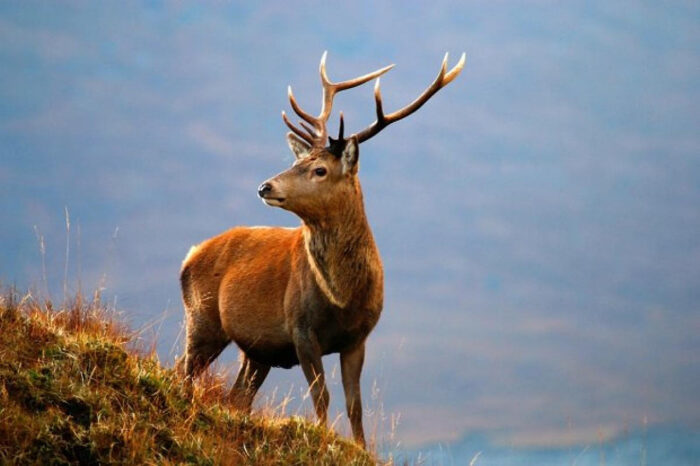
Numerous tourists are drawn to the lovely terrain of the Dachigam National Park. The Lower and Upper Dachigam divisions of the park, which covers an area of 141 sq km, are its two distinct sections. Between 1700 and 4300 meters are the differences in altitude between the two regions. The park is naturally surrounded by two ridges that are quite steep during tour packages to kashmir from Bhopal.
Alpine pastures, vast gorges, rocky hills, and steep slopes make up the park’s varied terrain. The Dachigam River originates from the Masrar Lake, which is situated in the higher Dachigam. The river, which flows through the entire Lower Dachigam region from its starting place, is regarded as the park’s lifeblood. The entire lower section receives water from the river.
History of Dachigam National Park
The Maharaja of Jammu and Kashmir first designated the current park’s area as a game preserve in the year 1910. Additionally, he desired to turn this forest into a catchment area for the Harwan reservoir, which would feed water to Srinagar. Additionally, a few tree varieties were planted to serve as winter feed for a variety of wild animals. When Jammu and Kashmir was annexed by India, Dachigam was then under the control of the State Forest Department. The Jammu Kashmir government declared this area a sanctuary in 1951. In 1981, this refuge was given the designation of national park.
Location of Dachigam National Park
The main city of the state, Srinagar, is 22 kilometers away from the Dachigam National Park while Travel to Kashmir.
Striking Feature of Dachigam National Park
When it comes to the lower valleys of the sanctuary, the winter is the ideal time to see the Hangul. The only predatory animal in the area is a leopard, but it is rarely seen. Tourists can view these wild cats during kashmir package from Jaipur , though, if they are resilient, patient, and lucky.
Major Wildlife Attraction of Dachigam National Park
The Kashmiri stag and the endangered Hangul both have a natural habitat in the park. In India, there is only one species of red deer. Several initiatives are being done to rescue this endangered and stunning species.
Also Read: Famous Wildlife in Ladakh State
Flora of Dachigam National Park
The Himalayan Black Bear, Leopard, Musk Deer, Himalayan Marmot, and Species of Wild Goats like the Makhor are among the other animals that call the park home, in addition to the Hangul or Kashmiri Stag.
Avifauna of Dachigam National Park
The beautiful pheasants like Crimson Tapogan, Blood Pheasant, Golden Eagle, and Bearded Vulture are among the unusual Himalayan bird species.
Climate of Dachigam National Park
The Dachigam National Park is frigid all year long. The calm and pleasant summer season lasts from May through August. In the summer, the temperature ranges from 8°C to 14°C. September through December are the winter months. The temperature drops by 2 to 4 degrees Celsius during the bitterly cold winters. In the summer, light wool clothing is appropriate, but in the winter, heavier wool clothing is needed. so Swastik Holiday Mumbai Travel Agents, suggest every traveler to visit Dachigam National Park in summer Months.
Best time to visit Dachigam National Park
Except for the winter months, when freezing temperatures and snow make the terrain difficult to navigate and most animals are unable to be seen, the sanctuary is open all year round. However, October and November are regarded as the best months because to the pleasantest weather and the highest levels of flora activity. Inaccessible from January through April.
Lower Dachigam is best visited between September and December. The months of June through August are ideal for visiting upper Dachigam.
Also Visit: Best Time to Visit Kashmir
Wildlife at Dachigam National Park
Dachigam National Park is home to a variety of animals and birds, many of which are unique and endangered due to the park’s deep forests, varied terrain, and range of altitude.
Animals
Himalayan Black Bear, Himalayan Brown Bear, White-bellied Musk Deer, Yellow-throated Marten, Himalayan Weasel, Jackal, Long-tailed Marmot, Jungle-cat, Leopard Cat, Himalayan Fox, etc. are some examples of Himalayan wildlife.
Fast Facts
The Kashmir stag, also known as the hangul, is the park’s principal draw and the state animal of Kashmir.
The Himalayan Black Bear, Long-Tailed Marmots, Leopard, Jackal, Red Fox, Himalayan Weasel, and Yellow-throated Marten are a few of the frequently sighted animals.
Over 145 different bird species, including the Blue Magpie, Lammergeier, and Monal Pheasant, may be seen in the area. The park is unquestionably a beautiful delight for wildlife photographers and a teaching environment for kids.






